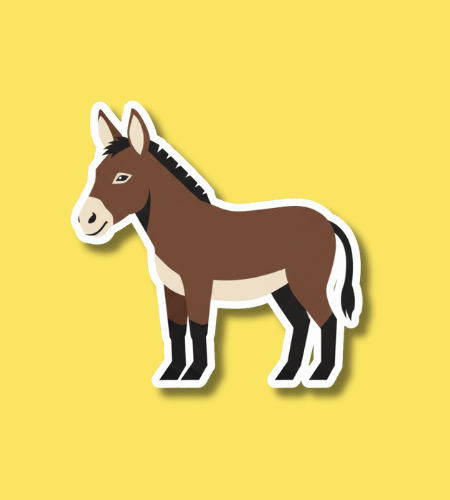The National Mule Day, celebrated each year on October 26, honours the hardy and dependable mule—a creature born of a male donkey and a female horse—whose strength, endurance and steady work have quietly shaped agriculture, transport and rural life. This day invites us to pause and appreciate a humble animal often overlooked, yet vital to many landscapes and livelihoods.
Table of Contents
History of National Mule Day
The date of October 26 is tied to the arrival of Spanish donkeys in the United States in 1785, a gift which helped begin mule‑breeding efforts here. Over time, the mule became a familiar figure in fields, mines, forests and canals.
Although the modern observance doesn’t hail from a single official proclamation, October 26 has been recognised by enthusiasts and organisations as the day to celebrate mules and their contribution to history and work.
Why is National Mule Day important?
Thinking about National Mule Day leads me to reflect on how many things we take for granted—power machines, motorised vehicles—once had very different helpers. Mules carried loads, cleared land, served in rugged terrain; their willing labour made possible farms, logging, mining, building transport routes. Celebrating this day reminds us that progress isn’t always about new machines—it’s also about the animals, people and traditions that laid the ground.
It also prompts a broader appreciation: the mule carries more than weight, it carries story. In rural life, in turning sod and hauling timber, in the effort of daily work, the mule stands for quiet perseverance, for partnership between humans and animals, and for the value of strength used well. Recognising this day means recognising unsung contributors to history.
- It honours an animal that bridged the gap between horse and donkey and served many industries.
- It highlights how rural and labour histories are supported by creatures as much as machines.
- It prompts respect for the work of animals and the landscapes they served.
- It connects us with traditions of farming, transport and frontier life.
- It encourages reflection on how todays tools may overshadow stories of past collaboration between humans and animals.
How to Observe National Mule Day
Observing National Mule Day can be simple and meaningful. If you are near a farm, ranch or historic site where mules are kept, consider visiting, learning about the work they do, and thanking the people who care for them. Alternatively, you might read or share stories about mules and their role in history—turning the spotlight on a creature we might otherwise overlook.
You could also support organisations or farms that preserve heritage animal breeds, or simply reflect on the value of steady work—not just flashy accomplishments—whether by people or animals. Invite someone into a conversation about how everyday effort builds our world, and how things like the mule helped make that possible.
- Visit a local farm or heritage site and meet a mule or learn about mule work.
- Read a short article or watch a video about the history of mules in agriculture or transportation.
- Share a post or image on social media honouring mules and the people who care for them.
- Support a heritage or animal‑care organisation that works with mules or other working animals.
- Reflect on how the tools and animals of the past helped shape the present and what we might honour in our own lives.
National Mule Day Dates Table
| Year | Date | Day |
|---|---|---|
| 2025 | October 26 | Sunday |
| 2026 | October 26 | Monday |
| 2027 | October 26 | Tuesday |
| 2028 | October 26 | Thursday |
| 2029 | October 26 | Friday |
Subscribe to our newsletter and never miss a holiday again!

